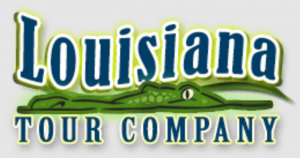Changing Skies: Louisiana Swamp Tours Explain Bird Migration and Winter Habits
Every season tells a different story in the swamp...Some species depart on long journeys that span continents, while others stay and adapt to the colder months here.”
MARRERO, LA, UNITED STATES, September 4, 2025 /EINPresswire.com/ -- Louisiana Tour Company is shining a spotlight on the seasonal rhythms of bird life in the wetlands, emphasizing the distinction between migratory species and those that remain through the winter. As fall approaches, the swamps and marshes of Southeast Louisiana become a stage for one of nature’s most fascinating transitions, with visitors and residents alike observing the ebb and flow of avian populations.— Milton Walker Jr.,
The wetlands of Louisiana are recognized as critical habitat for both migratory birds traveling the Mississippi Flyway and year-round species adapted to life in the swamps. This seasonal shift is not just a matter of curiosity but a vital ecological process that maintains the balance of regional biodiversity.
“Every season tells a different story in the swamp,” said Milton Walker Jr., owner of Louisiana Tour Company in Marrero, Louisiana. “Some species depart on long journeys that span continents, while others stay and adapt to the colder months here. Both groups play important roles in the ecosystem, and understanding the difference helps people appreciate the richness of Louisiana’s wetlands.”
Migratory Guests
Each year, countless migratory birds pass through Louisiana on routes stretching from the northern United States and Canada to Central and South America. Species such as the ruby-throated hummingbird, yellow-rumped warbler, and various shorebirds use the region’s swamps and marshes as resting and feeding grounds during their long journeys.
The Mississippi Flyway, one of the most significant bird migration corridors in North America, funnels millions of birds through Louisiana each fall and spring. For these species, the wetlands provide critical stopover habitat where they can refuel on insects, seeds, and aquatic vegetation before continuing their migration.
Winter Residents
Alongside these travelers are the swamp’s permanent residents, as well as birds that choose Louisiana as their winter home. Great blue herons, barred owls, red-shouldered hawks, and woodpeckers remain active through the colder months. Waterfowl such as gadwalls and northern shovelers also winter in the state, taking advantage of the region’s mild climate and abundant resources.
These birds adapt to changing conditions by altering feeding strategies, shifting territories, or relying on the shelter of cypress groves and marsh vegetation. Their presence ensures that the swamp remains alive with activity even when many migratory species have moved on.
Ecological Importance
The distinction between those that leave and those that stay underscores the ecological importance of Louisiana’s wetlands. Migratory birds depend on the region as a seasonal lifeline, while resident species form the foundation of the ecosystem year-round. Both groups contribute to insect control, seed dispersal, and the balance of predator-prey relationships that sustain swamp biodiversity.
Without healthy wetland habitats, migratory populations would lose essential stopover sites, and resident birds would face diminished food sources and nesting areas. Protecting these environments ensures that the seasonal cycle of arrivals and departures continues for generations to come.
Educational Opportunities
Bird migration offers an accessible way for the public to connect with ecology. Swamp tours during the fall and winter months provide visitors with opportunities to witness both transitions—the departure of long-distance travelers and the activity of local residents preparing for colder weather.
Guides highlight the behaviors, calls, and habitats of each species, explaining how migration shapes the larger story of the swamp. Visitors often arrive expecting to see alligators as the main attraction, only to leave with a newfound appreciation for the diversity of bird life.
A Year-Round Destination
The seasonal cycle of who leaves and who stays ensures that Louisiana’s swamps remain a year-round destination for wildlife observation. In spring, migrations bring bursts of color and sound as birds return north. In summer, residents dominate the ecosystem while raising young. By fall, the cycle begins again, with travelers heading south and wintering species settling in.
For Louisiana Tour Company, these natural patterns underscore the uniqueness of the wetlands. Each season brings a new cast of characters to the swamp, creating an ever-changing landscape that reflects the adaptability and resilience of bird life in the region.
“Watching the swamps shift from one season to the next reveals just how interconnected these ecosystems are,” Walker said. “Migratory species remind us of the global importance of Louisiana’s wetlands, while resident birds show the strength of the local environment to sustain life throughout the year.”
Looking Ahead
As climate conditions and habitat pressures change, the dynamics of migration and residency may continue to evolve. Conservation of wetlands will remain critical to sustaining both migratory stopovers and year-round habitats. Swamp tours serve not only as recreational experiences but also as platforms for education, raising awareness of the importance of preserving Louisiana’s unique natural landscapes.
By highlighting the distinction between birds that leave and birds that stay, Louisiana Tour Company contributes to a broader understanding of how wildlife adapts to seasonal challenges. The story of migration and residency is a reminder that the swamps are not static—they are living systems in constant motion.
About Louisiana Tour Company
Louisiana Tour Company, based in Marrero, Louisiana, provides swamp, plantation, and city tours designed to showcase the cultural and ecological heritage of Southeast Louisiana. Owned and operated by Milton Walker Jr., the company emphasizes education, accessibility, and the preservation of the region’s natural landscapes.
Morgan Thomas
Rhino Digital, LLC
+1 504-875-5036
email us here
Visit us on social media:
Facebook
Legal Disclaimer:
EIN Presswire provides this news content "as is" without warranty of any kind. We do not accept any responsibility or liability for the accuracy, content, images, videos, licenses, completeness, legality, or reliability of the information contained in this article. If you have any complaints or copyright issues related to this article, kindly contact the author above.


